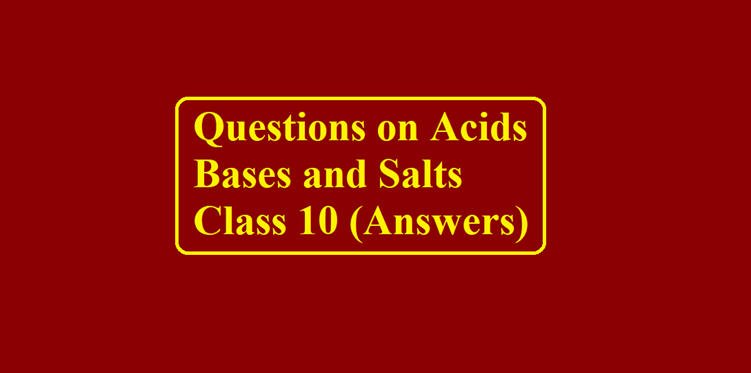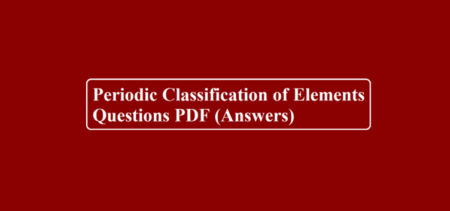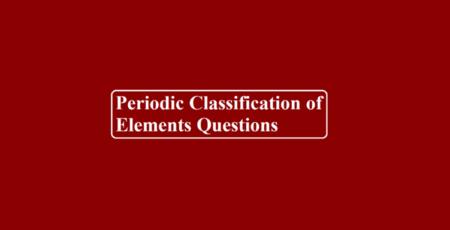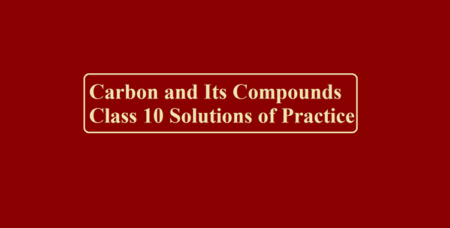Questions on Acids Bases and Salts Class 10 (Answers)
Questions on Acids Bases and Salts Class 10 (Answers)
Ans 1. Curd contains lactic acid which can make poisonous compounds with brass and copper vessels.
Ans 2. The fizzing will occur more vigorously in test tube ‘A’ because HCl is a strong acid and reacts faster than acetic acid which is a weak acid.
Ans 3. (a) Highly soluble bases are called alkalies e.g., KOH.
(b) Bee sting contains HCOOH, formic acid which causes irritation. Baking soda (basic) neutralises HCOOH, therefore it gives relief from pain by rubbing it on the sting area.
Ans 4. (a) It has one molecule of water associated with 2 molecules of CaSO4. Water molecules are present as water of crystallisation.
(b) It is a mild base and it can neutralise hyperacidity without harming our bodies.
Ans 5. The powder is baking powder. It consists of sodium hydrogen carbonate and tartaric acid. NaHCO3 gives CO2 on heating which makes the bread cake soft and fluffy. Tartaric acid neutralises Na2CO3 which is bitter in taste.
Ans 6. The molecules of water associated with a crystalline substance are called ‘water of crystallisation.
CuSO4.5H2O → CuSO4 + 5 H2O
When hydrated copper sulphate is heated its colour changes from blue to dirty white and water droplets are formed. If we add a small quantity of water to anhydrous CuSO4, we get blue colour again. The presence of molecules of water of crystallisation was lost on heating.
Activity: To study the effect of heat on hydrated crystalline salts.
(i) Take 2 g of CuSO4.5H2O in a test tube.
(ii) Observe the initial colour of the salt.
(iii) Heat the test tube at top of the burner carefully as shown in the diagram.
(iv) Record your observations.
(v) Cool the crystals and add a few drops of water.
(vi) Record your observations again.
Observations: The blue colour of CuSO4.5H2O is changed to dirty white anhydrous CuSO4 and water droplets were formed. On adding water, the blue colour of the salt was restored.
Conclusion: CuSO4.5H2O is a hydrated salt which loses water of crystallisation, which on heating becomes dirty white and regains its colour when it comes in contact with water.
Ans 7. (a) Phenolphthalein will turn pink in soap solution.
(b) Chlorine is the by-product of the chloralkali process which is used in the manufacture of bleaching powder.
(c) Universal indicator specifies the various levels of H+ ion concentration.
Ans 8. (a) ‘X’ is NaHCO3 (Sodium hydrogen carbonate). ‘Y’ is CO2 gas, which is used in fire extinguishers.
(b) NaHCO3 + HCl → NaCl +H2O + CO2
Ans 9. (a) Indicator is a substance which gives different colours or odours in acid and base e.g., litmus and turmeric are indicators obtained from plants.
(b) Na2O(s) + H2 O(l) → 2NaOH(aq)
The solution will turn phenolphthalein pink and red litmus paper blue.
(c) Sodium chloride and water are formed: NaOH(aq) + HCl(aq) → NaCl(aq) + H2O(l)
Ans 10. (a) Tap water contains ions which makes it a good conductor whereas distilled water does not contain any ions.
(b) Dry HCl gas does not dissociate into ions, so it has no effect on the litmus. Hydrochloric acid forms ions, so it turns blue litmus red.
(c) Baking soda prevents the formation of lactic acid when milk turns sour.
(d) Acid is added to water slowly because the reaction is highly exothermic. If water is added to acid, then the glass containers may break due to the heat evolution.
(e) NH3 dissolves in H2O forming NH4OH, therefore it acts as base:
NH3 + H2O → NH4OH → NH4+ + OH–
Ans 11. (B) Na2CO3
Ans 12. (B) Alkalies are soluble in water but all bases do not
Ans 13. (B) Baking soda
Ans 14. (B) Basic
Ans 15. (A) Sodium hydroxide
Ans 16. (D) Oxalic acid
Ans 17. (A) Bleaching powder
Ans 18. (A) Methanoic acid
Ans 19. (C). X- Sulphuric acid and Y- Hydrogen gas
Ans 20. (C) Antacid
Ans 21. (D) all of the above
Questions on Acids Bases and Salts Class 10 (Answers)
Questions on Acids Bases and Salts Class 10



